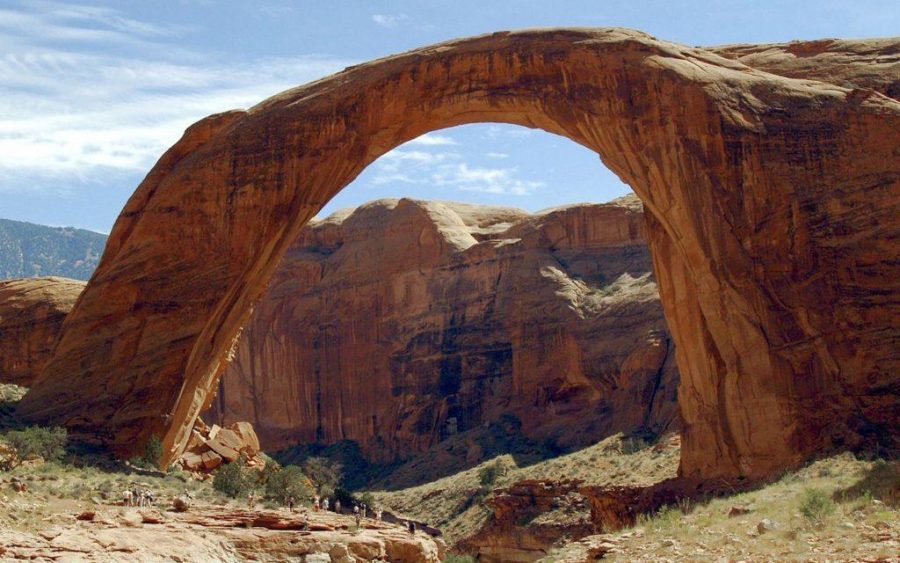A team of professors and students from the U recently published research regarding the natural resonance of the Rainbow Bridge, a study they conducted in partnership with the U.S. National Park Service. The lead author was Jeffrey Moore, an Assistant Professor of Geology and Geophysics at the U.
Rainbow Bridge — the world’s highest natural bridge — lies near Lake Powell at the Utah-Arizona border. It is a sacred site to select Native American tribes, standing 88 meters tall and spanning 83 meters in width.
The team of researchers composed of professors, students, seismologists, and park employees measured the natural frequencies of vibration of the bridge. These vibrations result from the mass and stiffness of the structure. The researchers also looked at the effect of outside forces on the resonance of the bridge.
“This is important because different energy inputs can variably excite different modes of vibration,” Moore said.
Researchers from the U were invited to help with these measurements because they had previous experience with similar studies. Ben White, an undergraduate Geoscience student at the time, was key to the study. His rock climbing skills were used to place the instruments in difficult-to-reach places.
Multiple seismometers were used to measure the vibrations over a period of 20 hours. During this time, two nearby earthquakes occurred in Utah and one in Oklahoma. Data from the seismometers showed that the shaking of the bridge was amplified by earthquakes.
The team identified the bridge’s first eight modes of vibration, gathering data which showed the primary resonance of the bridge is 1.1 Hz. Researchers learned that the resonance frequency of Lake Powell contributes to the shaking of the bridge, a result they say was unexpected.
Though the Rainbow Bridge is not currently being monitored, the team has been and still is gathering data from many other sites, including Landscape Arch, Mesa Arch and Corona Arch. Moore says that they hope to return to these sites regularly to determine whether the vibrations of the arches are being permanently affected by outside forces.
“We are just beginning to understand the dynamic of how energy sources contribute to stimulating resonance,” explained Moore. “What we do know is that the bridges are feeling all the things that we do.”
Their publication regarding this research was published during late September in Geophysical Research Letters.
k.wang@dailyutahchronicle.com
@karissawang


